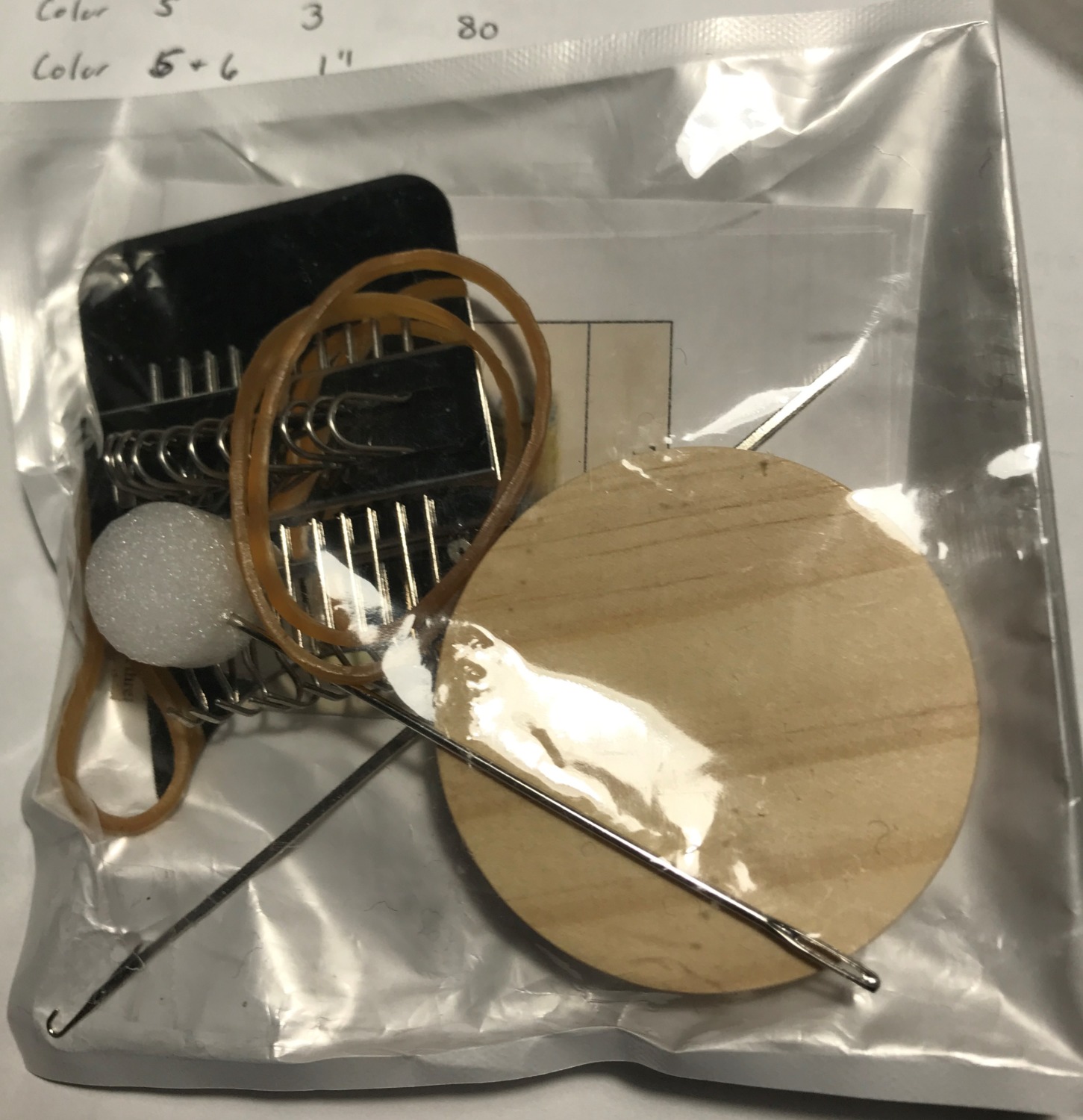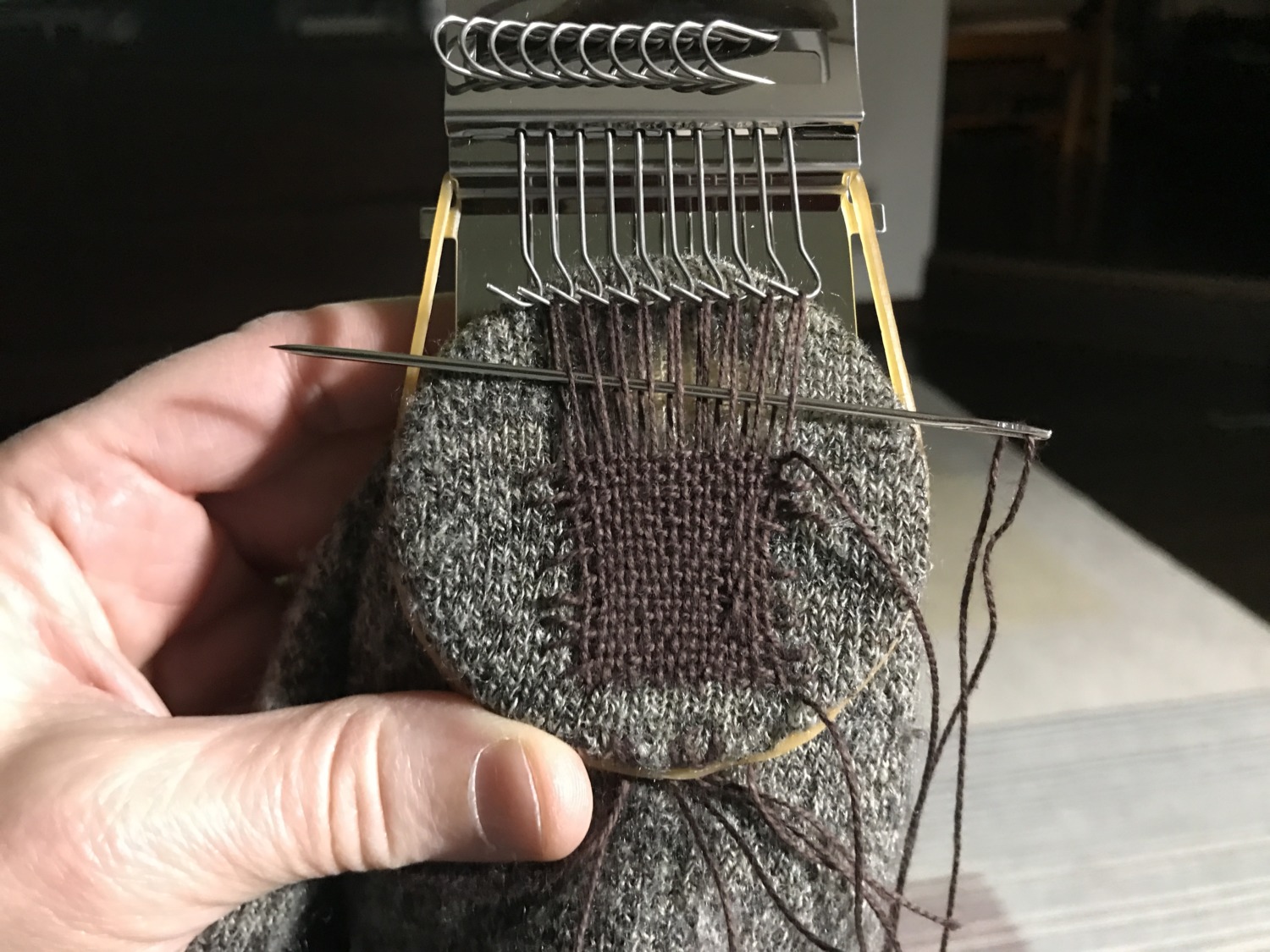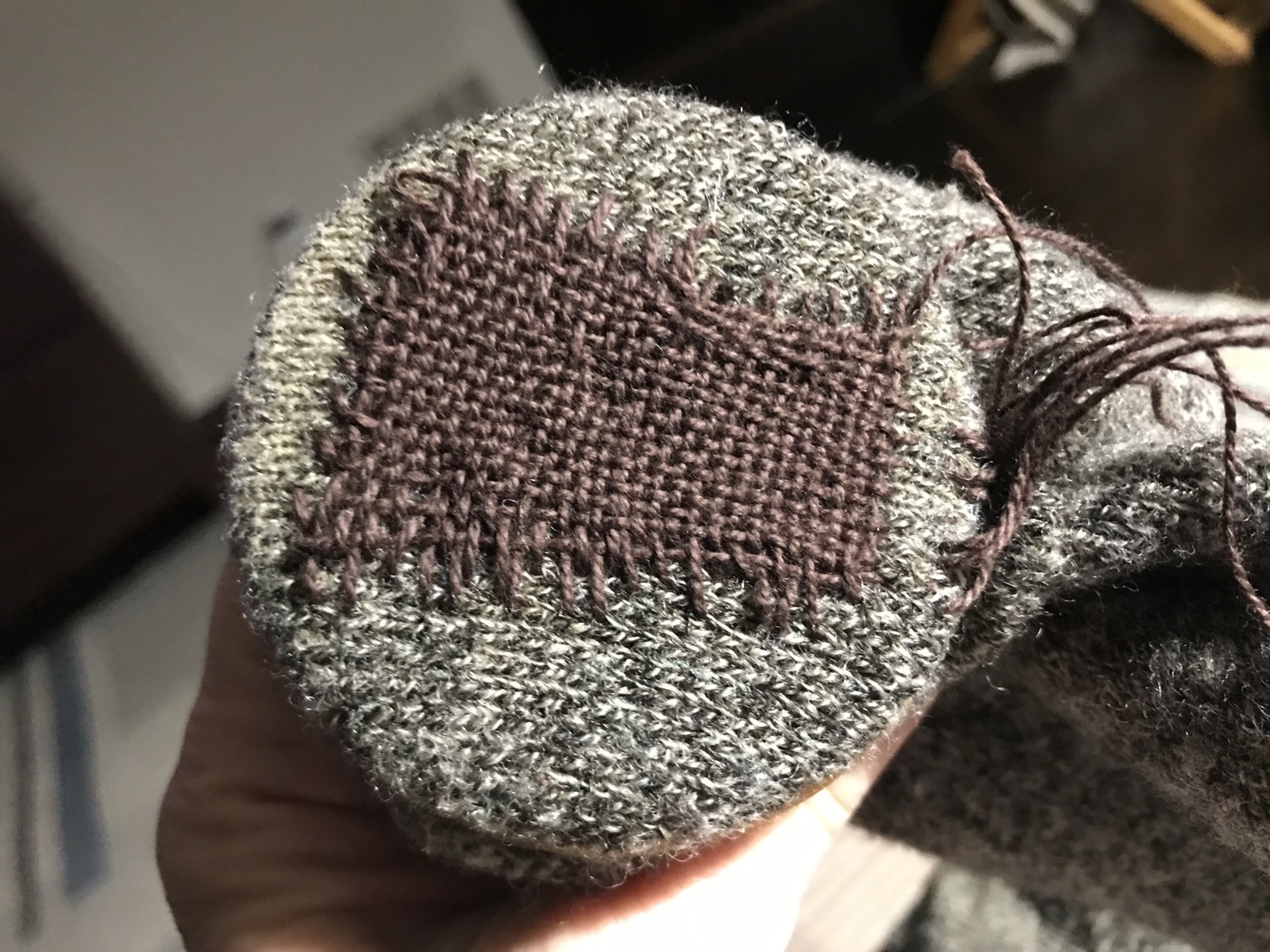For my birthday, Tom got me a darning loom. This was not a random gift. I asked for a darning loom. I had seen them in several magazines and thought it would be good to have. With historical clothing comes historical clothing repair and a darning loom is a good way to patch a rip or hole. I learned how to darn socks when I was a teenager, so I have been doing that for a long time. Historical shoes can be very hard on historical socks.
Darning is a sewing technique for repairing holes or worn areas in fabric or knitting using needle and thread alone. Hand darning employs the darning stitch, a simple running stitch in which the thread is “woven” in rows along the grain of the fabric, with the stitcher reversing direction at the end of each row, and then filling in the framework thus created, as if weaving. Darning is a traditional method for repairing fabric damage where patching is impractical or would create discomfort for the wearer, such as on the heel of a sock.

A darning loom is a small hand-held loom for weaving patches into the original cloth. A darning loom has a wood piece which goes inside the cloth and is grooved. The rest of the loom goes on the outside, and the two parts are held together by a rubber band. The darning loom is warped and woven upon with a needle, which also servers as a beater. Darning looms typically have heddles made of flip-flopping rotating hooks, which raise and lower the warp, creating sheds to make weaving the patch easier. The little looms were very popular during Word War II when clothing was rationed.
Tom got me the biggest darning loom he could find, which was very nice but not what I wanted. With his permission, I ordered a smaller loom for the kinds of repairs I usually do. I don’t need to use the loom for most holes in socks, because I try to catch them when they are small. But the loom is perfect when I need to repair larger areas of fabric. With two sizes of darning looms, I can repair most holes or tears.
Many darning looms are called Speedweave. Despite the name, using a darning loom is not a fast way to repair fabric. My first effort took me a couple of hours. I had some thick socks that I really love and the heel had worn away on one of the socks. I decided to patch it using my smaller darning loom.
The first step was getting the loom on the sock. I put the wooden piece under the area I wanted to patch, and then attached the loom on top of the sock. The pieces hold together by using a thick rubber band.
The second step was putting on the warp, the vertical strings through which I would weave. The directions suggested using one string of yarn for every hook, but I used one string for every two hooks. The more strings you have, the more ends you have to weave in and I’m not a big fan of that. I put another rubber band around that to hold the loose ends down.
The third step was weaving the weft. To do this I turned all the hooks to the left which raised the right side of the yarn loops. After passing the yarn on the needle under the right side of the yarn loops, I pushed the string of yarn down and turned the hooks to the right. This raised the left side of the yarn loop and I could pass the needle under that to make the next pass of the weave. I continued to do this until I filled up the hole, which ended up being 31 passes back and forth.
The final step was weaving in all the ends, which also let me secure the patch to the fabric of the sock.
I have worn the socks several times since I patched them and the patches are great. They are very sturdy and will probably be in good shape long after the rest of the socks have died. I look forward to trying my new tool on other repairs.



